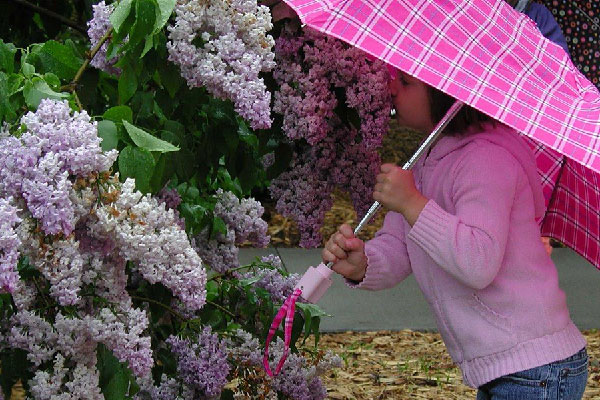“It is not so much the eye that summons the gardens of childhood, but the nose… gardening is one of the very few arts to make use of the olfactory sense, to harness its uncanny knack for unleashing memory.” Ken Druse
We may have strong feelings about the smell of particular plants but whether they are appealing to us or not has nothing to do with it… for plants it’s all about attracting pollinators. Strong smells, whether they’re good or bad, are is almost all cases an attempt to spread pollen.
Although fragrance may not be a primary “selector,” our love for lilacs, hyacinth, lavender and many other plants is certainly due in part to their fragrance, and in many cases to childhood remembrances.
If you’re planting with fragrance in mind, placement is important. Many plants, especially herbs, need to be crushed or bruised to release their scent. Planting them between stepping stones or along pathways will increase the chance of noticing them.
Lilacs and lindens can be planted outside windows to bring their fragrance indoors. Sweet-smelling firs or pines can be placed on paths taken in winter, like regularly traveled paths to trash cans or birdfeeders.
Wine tasters and plantsmen have an edge on defining fragrance. Plantsman Ken Druse, for instance, defines the smell of oriental lilies as a “blend of clove, burnt sugar, green apples, anise and a hint of vanilla.” The rest of us tend to rely on broader categories—sweet, citrusy, fruity.
Regardless of whether we have a word for it, a strong fragrance is something we’re likely to remember and sometimes even plan parts of our gardens around.
Below are some of the most favored plant fragrances:
- Herbs (rosemary, basil, mint, thyme)
- Honeysuckle
- Hyacinth
- Iris
- Lavender
- Lilac
- Lily
- Lily of the valley
- Linden
- Magnolia
- Mockorange
- Peony
- Rose
- Sweet pea
- Viburnum (Korean spice and others)
- Wisteria

